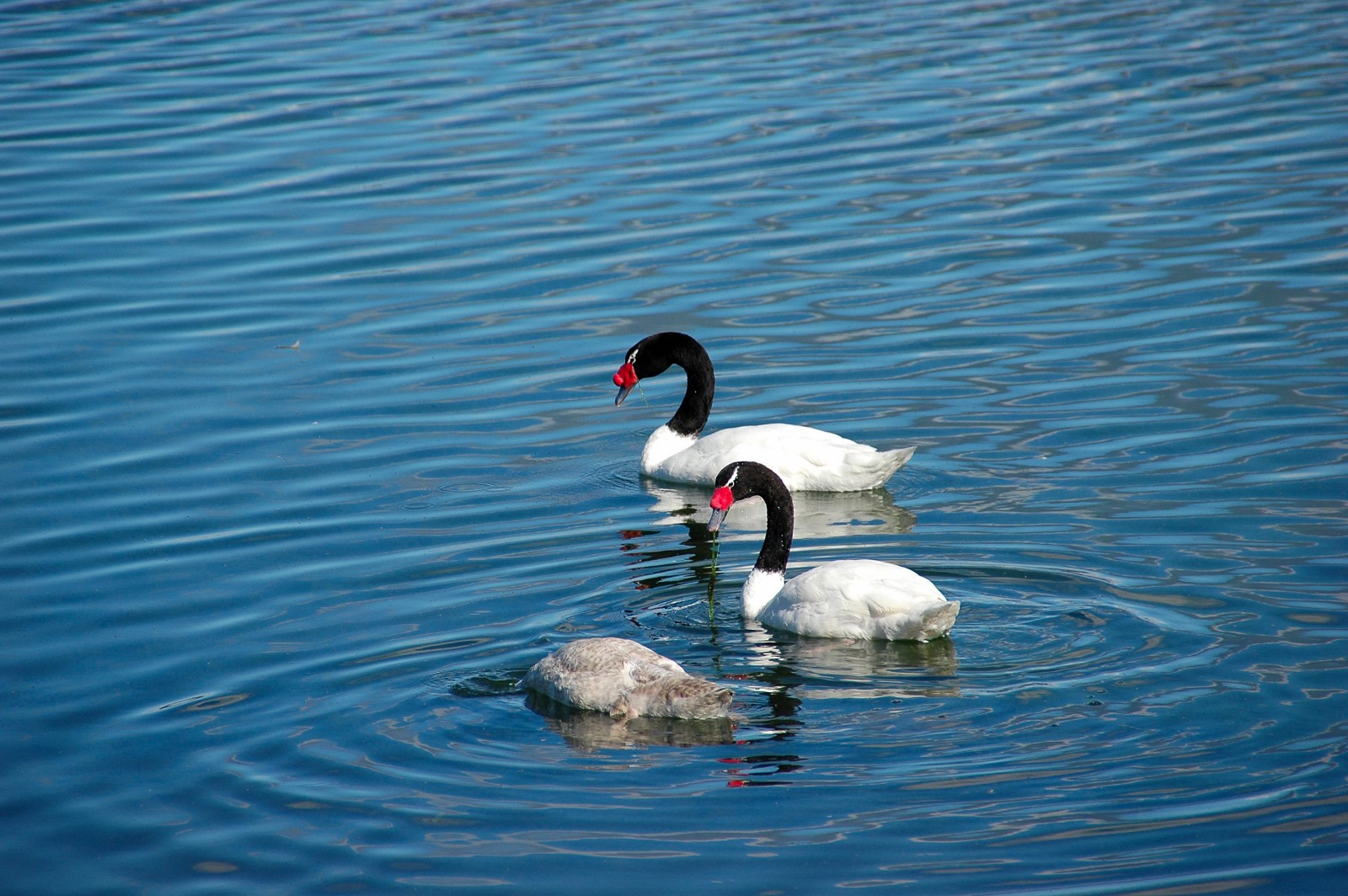Black-necked Swan
A species of True Swans Scientific name : Cygnus melancoryphus Genus : True Swans
Black-necked Swan, A species of True Swans
Botanical name: Cygnus melancoryphus
Genus: True Swans
Content
Description People often ask General Info
 Photo By Baldhur , used under CC-BY-SA-3.0 /Cropped and compressed from original
Photo By Baldhur , used under CC-BY-SA-3.0 /Cropped and compressed from original Description
Adults average 102 to 124 cm (40 to 49 in) and weigh 3.5 to 6.7 kg (7.7 to 14.8 lb). The wingspan ranges from 135 to 177 cm (53 to 70 in). The body plumage is white with a black neck and head and greyish bill. It has a red knob near the base of the bill and a white stripe behind the eye. The sexes are similar, with the female slightly smaller. The cygnet has a light grey plumage with a black bill and feet. The black-necked swan was formerly placed in monotypic genus, Sthenelides. The black-necked swan, like its nearest relatives the black and mute swan is relatively silent. Also, unlike most wildfowl, both parents regularly carry the cygnets on their backs. The female lays four to six eggs in a nest of vegetation mound. The diet consists mainly of vegetation, insects, and fish spawn. 
Size
1.2 m
Colors
Black
White
Life Expectancy
30 years
Nest Placement
Ground
Feeding Habits
Black-necked Swan, a herbivorous bird, grazes on aquatic plants but also consumes insects and fish spawn. It forages with its long neck submerged, uniquely adapted to its wetland environment.
Habitat
Black-necked Swan's habitat encompasses freshwater marshes, lagoons with brackish water, shallow lakes, and sheltered coastal sites predominantly within the southern regions of South America. These environments often have rich submerged vegetation, beneficial for black-necked Swan's foraging. Black-necked Swan is typically found at low altitudes but can be seen in the lower valleys of the Andes and on lake shores within the Andean foothills for moulting purposes. The proximity of these habitats to human settlement does not significantly deter black-necked Swan, evidencing some level of adaptability.
Dite type
Herbivorous
People often ask
General Info
Feeding Habits
Bird food type
Distribution Area
The smallest member in its genus, it is found in freshwater marshes, lagoon and lake shores in southern South America. The black-necked swan breeds in Chilean Southern Zone, Patagonia, Tierra del Fuego and on the Falkland Islands. In the austral winter, this species migrates northwards to Paraguay, Bolivia and southern Brazil. The wetlands created by the Great Chilean earthquake like Carlos Anwandter Nature Sanctuary in Cruces River have become important population centers for the black-necked swan. 
Species Status
In 2004 and 2005 thousands of black-necked swans in the Carlos Anwandter Nature Sanctuary in Chile died or migrated away following major contamination by Valdivia Pulp Mill located on the Cruces River which feeds the wetlands. By August 2005 the birds in the Sanctuary had been "wiped out"; only four birds could be observed from a population formerly estimated at 5000 birds. Autopsies on dead swans attributed the deaths to high levels of iron and other metals polluting the water. Widespread and common throughout its habitat, the black-necked swan is evaluated as Least Concern on the IUCN Red List of Threatened Species. It is listed on Appendix II of CITES. 
Scientific Classification
Phylum
Chordates Class
Birds Order
Waterfowl Family
Geese Genus
True Swans Species
Black-necked Swan